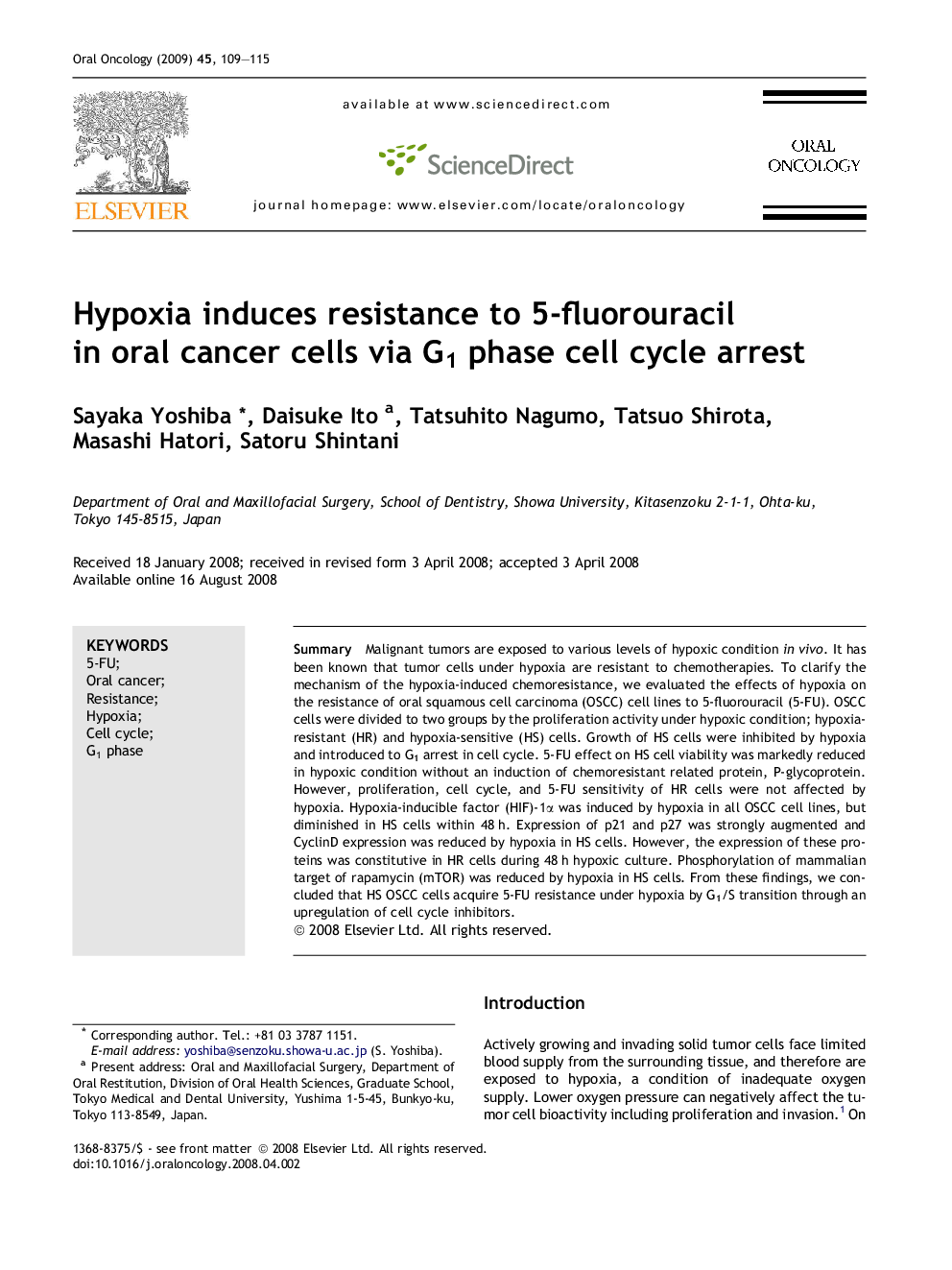| Article ID | Journal | Published Year | Pages | File Type |
|---|---|---|---|---|
| 3165468 | Oral Oncology | 2009 | 7 Pages |
SummaryMalignant tumors are exposed to various levels of hypoxic condition in vivo. It has been known that tumor cells under hypoxia are resistant to chemotherapies. To clarify the mechanism of the hypoxia-induced chemoresistance, we evaluated the effects of hypoxia on the resistance of oral squamous cell carcinoma (OSCC) cell lines to 5-fluorouracil (5-FU). OSCC cells were divided to two groups by the proliferation activity under hypoxic condition; hypoxia-resistant (HR) and hypoxia-sensitive (HS) cells. Growth of HS cells were inhibited by hypoxia and introduced to G1 arrest in cell cycle. 5-FU effect on HS cell viability was markedly reduced in hypoxic condition without an induction of chemoresistant related protein, P-glycoprotein. However, proliferation, cell cycle, and 5-FU sensitivity of HR cells were not affected by hypoxia. Hypoxia-inducible factor (HIF)-1α was induced by hypoxia in all OSCC cell lines, but diminished in HS cells within 48 h. Expression of p21 and p27 was strongly augmented and CyclinD expression was reduced by hypoxia in HS cells. However, the expression of these proteins was constitutive in HR cells during 48 h hypoxic culture. Phosphorylation of mammalian target of rapamycin (mTOR) was reduced by hypoxia in HS cells. From these findings, we concluded that HS OSCC cells acquire 5-FU resistance under hypoxia by G1/S transition through an upregulation of cell cycle inhibitors.
